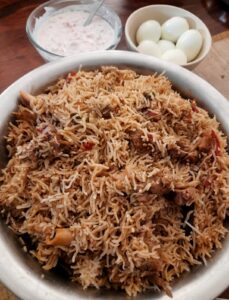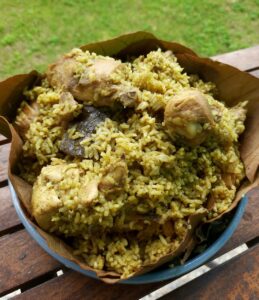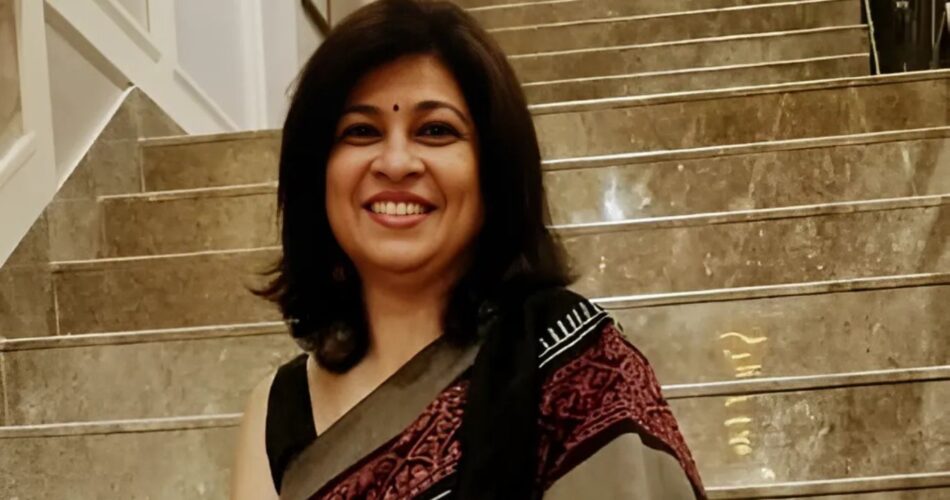For Home Chef Rekha Rigo, who took up cooking, her first love, after spending 25 years in the garments business, the quest for authenticity begins with the masalas – she sources them with great care and then grinds them all at home. Her conversation on ‘Food Talk with Sourish Bhattacharyya’ took off with an obvious question. What makes the Chettinad spice box different from the rest?
Rekha took us on a journey back in time, when the merchants of Chettinad used to be seafaring men engaged in a robust trade with South-East Asia, where spices were as important to the economy as they were in India’s Deep South. The journeys of the merchants across spice-rich nations got reflected in their famous masala, which is pepper heavy, but with star anise and fennel added to pump up the taste.
This spice mix is hard to come by in masalas elsewhere much of India. Chettinad masala is also not as hot as it is reputed to be. “You have the pepper punch, but it is not chilli hot,” Rekha points out. Andhra Pradesh, on the contrary, being famous for its Guntur red chillies, uses masala mixes that are chilli hot.
To find out what’s on Rekha Rigo’s menu, go to https://www.wethechefs.in/
The interesting feature of the masala mixes used in the South is that within a state, one can notice differences in taste profiles. Take Tamil Nadu, for instance. The spice box of Chettinad cooks is perceptibly different than that of their counterparts in Kongunadu to the north-west of the state, or Coimbatore, or neighbouring Erode, or even Tirunelveli, the district to the state’s south bordering Kanya Kumari.
The food that is popular in Chennai, Rekha explains, is an amalgamation of these multiple influences, and the metropolis also has a robust street food culture and a well-developed taste for ‘chatpata’ items.
Rekha comes from a Telugu-speaking family with roots in Chittoor district, Andhra Pradesh, but she was born and raised in “huge joint family” in Chennai’s famous T. Nagar neighbourhood, which explains her deep interest in and understanding of the cuisines of Tamil Nadu and Andhra Pradesh.
One of her forefathers ran a restaurant on board the passenger ship plying between Chennai and Rangoon, so she has grown up seeing large-scale cooking both on the ship and in her joint family, when all the members sat down for their meals. “For any wedding, or any other social event, we never got food from outside.
We only ate what was cooked in our backyard,” Rekha says, adding that her mother’s cooking has always been an inspiration for her.
Rekha married a Goan, whose mother was Parsi, and they grew up in Kolkata because her father-in-law was in the tea gardens. Her mother-in-law passed on a number of recipe books written by the ladies of the tea estate, enabling Rekha discover new recipes and expand her repertoire. As a result, she could be in demand one evening for her Chettinad spread, and on another, for her Andhra coastal cuisine temptations.
Interestingly, Rekha started out as a “Christmas baker”, using the recipes passed on by her mother-in-law, and she ventured into hot food seven-eight years ago, her base being Gurgaon, where her husband and she moved in 2006.
Dwelling on the culinary diversity that she has grown up with, Rekha highlights, by way of an example, the many biryanis that have originated in the South and are now popular across the country, from Tamil Nadu’s Ambur and Dindigul Thalappakatti biryanis, to Karnataka’s Donne biryani, Kerala’s Thalassery biryani, and just in case you thought Hyderabadi biryani is the only one to have originated in the two Telugu-speaking states, you have to go and check out Nellore biryani.


“There is so much more to South Indian cuisines than the ‘idli-vada-dosa’ people associate them with,” Rekha notes. Another misconception she busts is that the southern cuisines are coconut-heavy. “The way we use coconut is very, very balanced, the flavours are balanced,” she adds.
Talking about the cornucopia of spices and herbs available to cooks in the South, Rekha mentioned ‘gongura’, which are the vitamin-rich leaves of a plant related to the roselle. Popular especially in Andhra Pradesh, where the leaves are pickled and then eaten with just rice, ghee and fried ‘papad’, or with a side of a vegetable dish. This simple meal is what you’d need to cool you down on a hot summer day, especially when after it is washed down with chilled buttermilk to mellow the impact of the chilli-hot pickle.
Rekha reminded our viewers that her Gongura Mutton is much in demand at social events (from baby showers to Sufi nights) held at the We The Chefs Experiential Centre. Encouraged by the response, Rekha has also served the much-appreciated Gongura Paneer and even Gongura Aloo for our vegetarian clients. “These are very, very unique preparations, but people are open to tasting them,” she noted.
Call 8800988490 or drop an email at order@wethechefs.in to book your next party.
Rekha presides over a busy kitchen and she does it all by herself, still using paper and pen to jot down notes, checking out ingredients during her monthly trips to Delhi’s famous INA Market, and keeping in constant touch with suppliers who deal in produce from the South. Of course, her supply line also includes her sisters who live in Chennai. She turns to them to get freshly ground spices.
“The key is to be organised,” Rekha says, giving us an insight into how she can manage all by herself a busy kitchen catering to orders that keep coming in.
Click here to book our Z’Appetite Party Packs and start enjoying your own party

